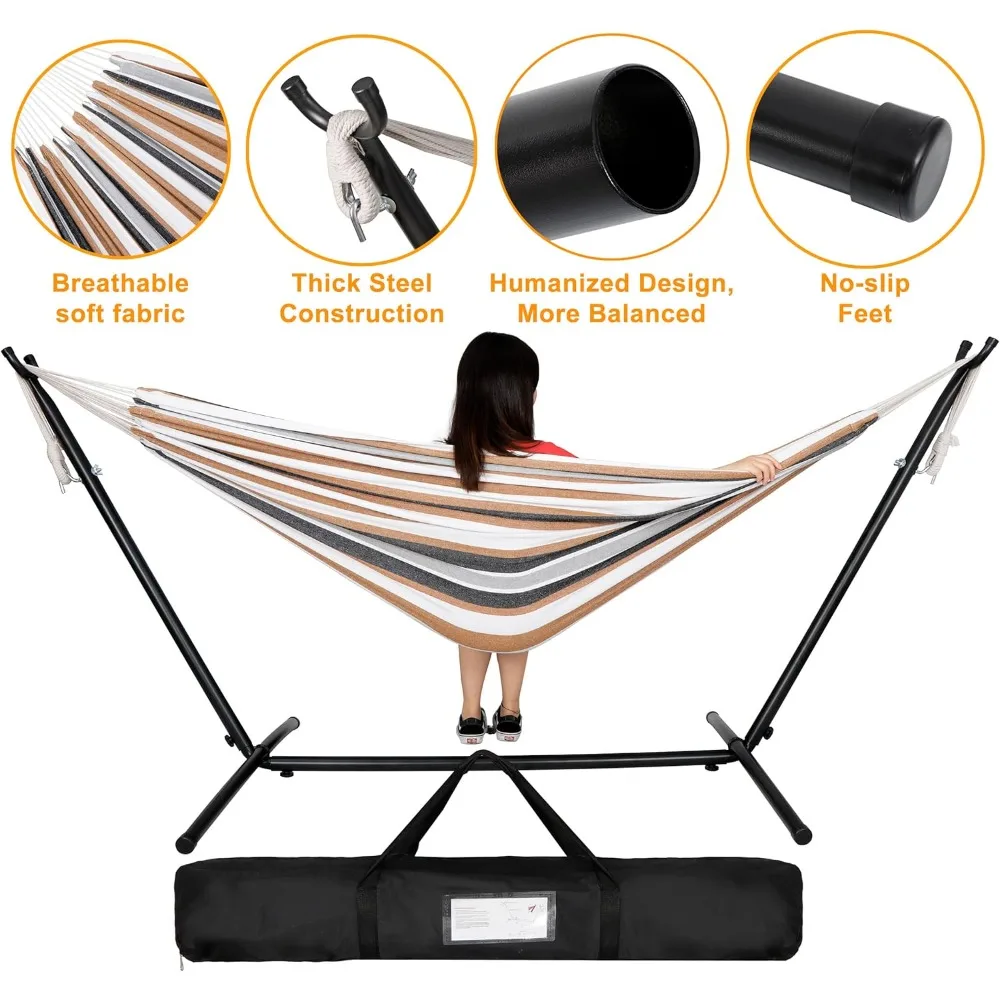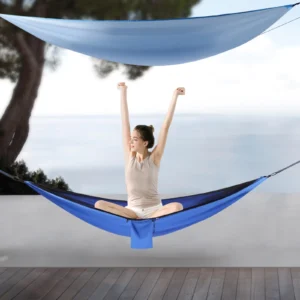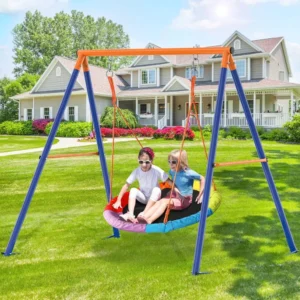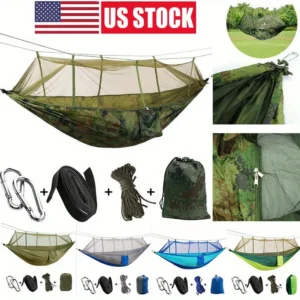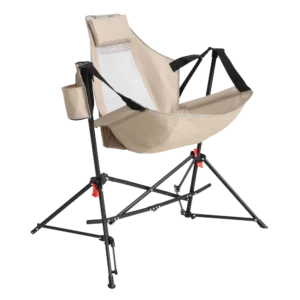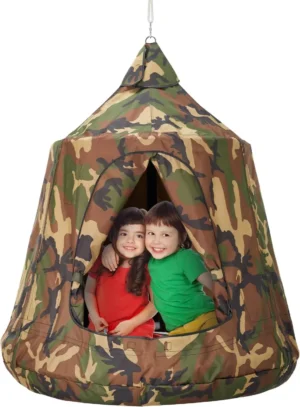Introduction: Understanding the Lightweight Hammock Challenge
The eternal outdoor gear dilemma: do you choose lightweight equipment that won’t weigh you down, or durable gear that won’t let you down? For hammock enthusiasts, this question becomes particularly pressing. When your suspended sleep system is all that separates you from a good night’s rest or a midnight crash to the forest floor, durability can’t be an afterthought.
Yet the appeal of ultralight hammocks is undeniable. Weighing between 8-16 ounces (227-454 grams), these featherweight wonders take up minimal pack space and barely register on your back during long treks. But the critical question remains: Can lightweight hammocks truly stand up to rugged outdoor conditions?
For backpackers, hikers, and campers who embrace hammock camping, understanding what determines longevity becomes essential. The materials, construction techniques, maintenance practices, and environmental factors all play crucial roles in a hammock’s lifespan. Strategic indoor-outdoor hammock placement considerations can significantly impact durability as well.
Throughout this article, we’ll explore the science behind hammock materials, construction quality that often goes unnoticed, environmental challenges, maintenance practices, and common failure points. The goal is to help you find that perfect balance between minimal weight and maximum durability for your outdoor adventures. Various ultralight camping hammock sets demonstrate different approaches to solving this paradox.
The Science of Hammock Materials: Strength-to-Weight Analysis
When examining lightweight hammocks, understanding the materials is fundamental to predicting durability. Different fabrics offer varying benefits in the constant battle between reducing weight and maintaining strength. The decisions manufacturers make about materials directly affect how your hammock will perform in the field.
Ripstop Nylon: The Backbone of Lightweight Design
Ripstop nylon has become the gold standard in lightweight hammock construction for good reason. This specialized fabric features a reinforced weave pattern with thicker threads interspersed at regular intervals, creating a grid-like structure. This ingenious design serves a critical purpose: preventing small tears from becoming catastrophic failures by stopping rips from propagating beyond the reinforced squares.
Key properties that make ripstop nylon ideal for lightweight hammocks include:
- Exceptional strength-to-weight ratio compared to traditional fabrics
- Natural elasticity that creates a comfortable cradle effect
- Quick-drying capabilities essential for multi-day trips
- Impressive tear resistance even at lower denier ratings
The weight difference between hammocks made from 40D (denier) versus 70D nylon can be substantial—often 4-6 ounces (113-170 grams)—while still maintaining reasonable durability. However, ripstop nylon does have limitations. It gradually degrades with UV exposure and can stretch when wet, potentially affecting comfort and performance in humid or rainy conditions.
The elevate sleep lightweight hammock camping experience depends heavily on these material properties balancing comfort with durability.
Polyester and Advanced Synthetics: Alternative Options
While nylon dominates the lightweight hammock market, polyester offers compelling advantages for those willing to accept a slight weight penalty:
- Superior UV resistance (maintains strength up to 5 times longer than nylon under constant sun exposure)
- Minimal stretching when wet, maintaining consistent hang tension in all conditions
- Excellent dimensional stability over time
Many premium hammock manufacturers opt for polyester in their designs despite the 10-15% weight increase because the durability benefits often outweigh the extra ounces for frequent users. Comparing the choosing best rope hammock options with synthetic materials shows distinct durability profiles for different use cases.
Advanced materials like Dyneema Composite Fabric (formerly Cuben Fiber) represent the cutting edge of lightweight hammock technology. These ultra-high-molecular-weight polyethylene fabrics offer incredible strength at minimal weight, though often at premium prices. A Dyneema hammock might weigh half as much as its nylon counterpart while offering comparable or superior tear resistance.
Fabric treatments also play a crucial role in enhancing performance. Durable Water Repellent (DWR) coatings help shed moisture, while silicone impregnation can improve tear resistance by up to 20%. For those interested in the most advanced options, various lightweight hammock sets showcase different material applications.
Construction Quality: The Hidden Factor in Hammock Durability
While materials receive most of the attention in lightweight hammock discussions, construction techniques often determine whether a hammock lasts for years or fails on its first outing. The old saying “a chain is only as strong as its weakest link” applies perfectly to hammock design.
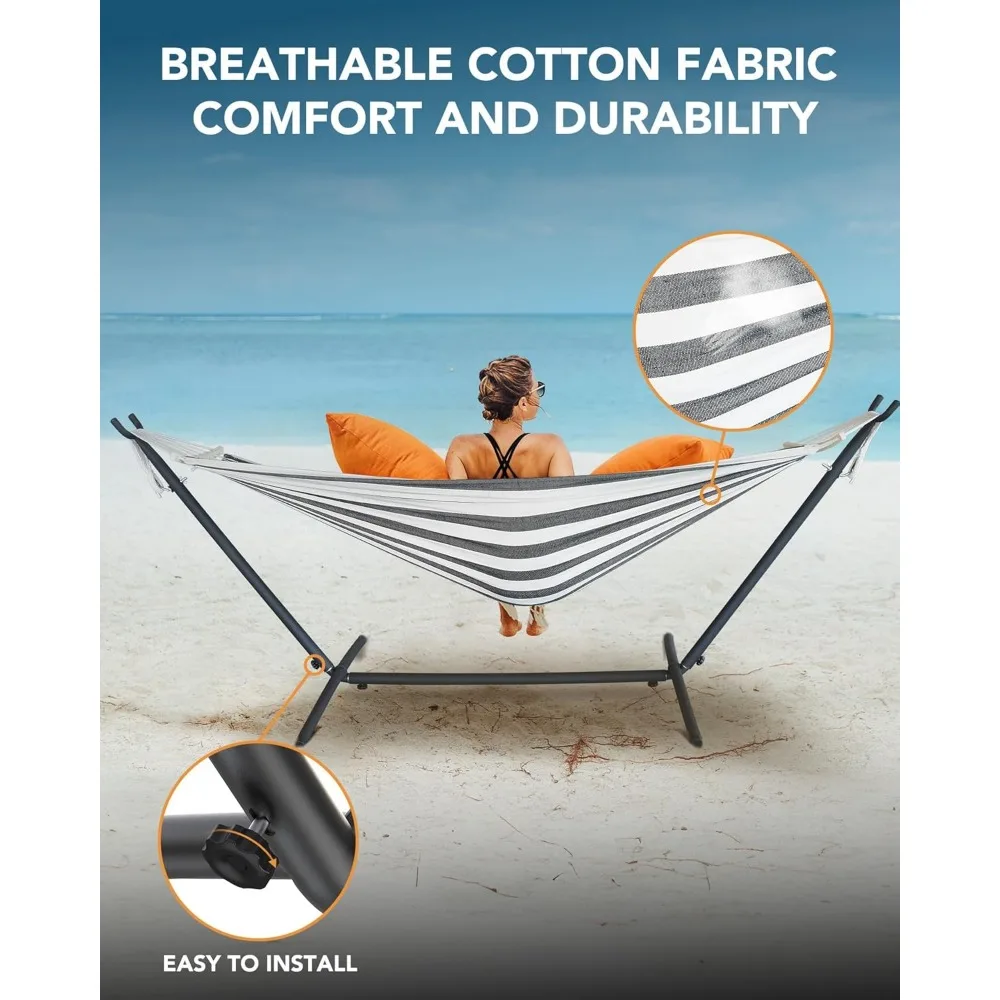
Stitching and Seam Reinforcement Techniques
The stitching pattern used in hammock construction critically affects overall durability. Premium lightweight hammocks typically feature:
- Triple-stitch seams that distribute tension across multiple thread lines
- Bar-tack reinforcement at high-stress points, capable of withstanding over 100 pounds of force
- Box-X pattern stitching at suspension connection points to prevent fabric tearing
- Reinforced end channels that evenly distribute weight load across the fabric
The thread quality itself matters significantly. UV-resistant polyester thread maintains its strength better than standard nylon thread under sun exposure. Well-constructed seams prevent the dreaded “fabric bunching” that creates uncomfortable pressure points and eventually leads to tears.
Knowing whether is it okay leave hammock outside requires understanding how these construction elements interact with environmental factors.
Suspension Systems: The Critical Connection Point
The suspension system represents both the most critical safety component and the most common failure point in lightweight hammocks. High-quality systems feature:
- Modular designs that allow for component replacement rather than full hammock replacement
- Carabiners rated for at least 12kN (kilonewtons) of force (approximately 2,700 pounds)
- Tree straps with reinforced stitching and appropriate width to prevent tree damage
- Specialized cordage like Amsteel or Dyneema with minimal stretch and high strength
Breaking strength varies dramatically between budget and premium suspension components. Basic polyester straps might fail at 700-900 pounds of force, while premium straps often maintain integrity beyond 1,500 pounds. For comprehensive protection, many campers choose camping hammock sets with bug net that integrate multiple protection features without compromising structural integrity.
Environmental Challenges: How Nature Tests Your Hammock
Nature subjects hammocks to a gauntlet of challenges that laboratory testing can’t fully replicate. Understanding these environmental factors helps set realistic expectations for hammock longevity and informs proper maintenance practices.
UV Exposure and Weather Effects
Ultraviolet radiation represents the silent destroyer of synthetic fabrics. Continuous exposure breaks down the polymer chains in nylon and polyester:
- Nylon can lose up to 30-40% of its strength after just 300-400 hours of direct sunlight
- Polyester typically retains strength longer, losing only 10-15% under the same conditions
- Dark-colored fabrics absorb more UV radiation and may degrade faster than lighter colors
Repeated wet-dry cycles also stress fabric and stitching. When nylon absorbs moisture, it can stretch up to 10%, then contract as it dries—a process that gradually weakens the material over time. Understanding hammock installation requirements safety guide principles helps mitigate these environmental risks.
Temperature fluctuations further complicate matters. Freezing temperatures can make some materials brittle, while extreme heat can soften adhesives used in construction. The practical implication is clear: even the highest-quality lightweight hammock has an environmental expiration date if constantly exposed to harsh conditions.
Physical Hazards: Abrasion, Punctures, and Tears
The outdoor environment presents countless physical hazards to hammock integrity:
- Sharp branches and rocks can puncture fabric during setup or while sleeping
- Repeated friction against tree bark causes gradual abrasion damage
- Small creatures (from rodents to insects) may chew or bore into fabric and suspension components
- Improper setup can create stress points that lead to catastrophic failure
Abrasion damage accumulates gradually, with each tiny fiber breakage reducing overall strength. What might start as a slight fuzzing of fabric can eventually become a full tear under body weight. For those seeking convenience without compromising durability, quick setup hammock sets offer streamlined designs that minimize setup-related damage risks.
Maximizing Lifespan: Essential Care and Maintenance
The good news: with proper care, lightweight hammocks can deliver years of reliable service despite their seemingly delicate nature. Implementing specific maintenance practices dramatically extends hammock longevity.

Proper Setup: The Foundation of Longevity
How you hang your hammock significantly impacts its lifespan:
- Maintain a 30-degree suspension angle to minimize lateral force on fabric and anchor points
- Adjust height and tension appropriate for your weight—tighter isn’t always better
- Choose smooth-barked trees without sharp branches that could damage suspension or fabric
- Use a structural ridgeline to ensure consistent hang geometry regardless of anchor point distance
- Inspect anchor points for sharp edges or rough surfaces before setup
Proper 30-degree suspension angles distribute weight efficiently, reducing stress on both fabric and suspension components. An overly tight hang can increase lateral forces by 200-300%, dramatically accelerating wear on all components. Following indoor outdoor hammock safety guide principles applies equally to wilderness settings.
Cleaning, Storage, and Inspection Routines
Regular maintenance prevents small issues from becoming major failures:
- Wash hammocks with mild soap and lukewarm water—never hot water or harsh detergents
- Allow complete drying before storage to prevent mold and mildew growth
- Store loosely in a breathable bag rather than tightly compressed
- Inspect systematically after every 10-15 nights of use
- Pay special attention to stitching, suspension connection points, and high-abrasion areas
For washing, use fragrance-free, non-detergent soap that won’t degrade fabric treatments or leave residue. After significant use (approximately 30-50 nights), perform a thorough inspection under tension to identify any developing weak points.
Camping Hammock Sets with Bug Net, Ultralight Camping Hammock Sets
$139.72 Select options This product has multiple variants. The options may be chosen on the product pageFolding Hammock Sets, Quick Setup Hammock Sets
Price range: $305.52 through $583.27 Select options This product has multiple variants. The options may be chosen on the product pageCamping Hammock Sets with Bug Net, Complete Camping Hammock Systems
Price range: $82.73 through $97.96 Select options This product has multiple variants. The options may be chosen on the product pageFolding Hammock Sets, Lightweight Hammock Sets
$295.80 Select options This product has multiple variants. The options may be chosen on the product pageComplete Camping Hammock Systems, Hanging Egg Chair Sets
$266.73 Select options This product has multiple variants. The options may be chosen on the product page
Common Failure Points and Prevention Strategies
Understanding where hammocks typically fail helps users anticipate and prevent problems. The vast majority of failures occur at predictable points under specific conditions.
Fabric and Stitching Issues
Common fabric failures include:
- Small punctures that gradually expand under body weight
- Stress tears radiating from anchor points due to improper tension
- UV-degraded fabric that loses tensile strength over time
- Seam separation caused by repeated loading and unloading cycles
Early warning signs to watch for include fabric pilling, visible thread damage, or small holes near seams. Field repairs can temporarily address minor issues—silicone-impregnated repair tape can patch small holes, while seam reinforcement can be accomplished with gear repair tape designed for outdoor use.
The ultimate guide ultralight hammock community has developed numerous field repair techniques that can save a trip when damage occurs.
Suspension and Hardware Vulnerabilities
Suspension systems typically show predictable wear patterns:
- Fraying at contact points with carabiners or hardware
- Abrasion damage where straps contact tree bark
- Metal fatigue in carabiners and other hardware
- UV degradation of exposed webbing
Most suspension components should be inspected every 100-150 uses and replaced at the first sign of significant wear. This represents a much smaller investment than replacing an entire hammock system. For those seeking integrated solutions, camping hammocks stands can eliminate many suspension-related durability concerns.
Making the Right Purchase: Durability Features to Look For
When selecting a lightweight hammock that will stand the test of time, certain indicators help identify truly durable options:
- Material specifications: 30D-70D ripstop nylon or polyester with documented tear strength
- Weight capacity ratings at least 100 pounds above your actual weight
- Reinforced stitching at all suspension connection points
- Modular design allowing component replacement
- Favorable reviews specifically mentioning long-term durability
- Comprehensive warranty coverage suggesting manufacturer confidence
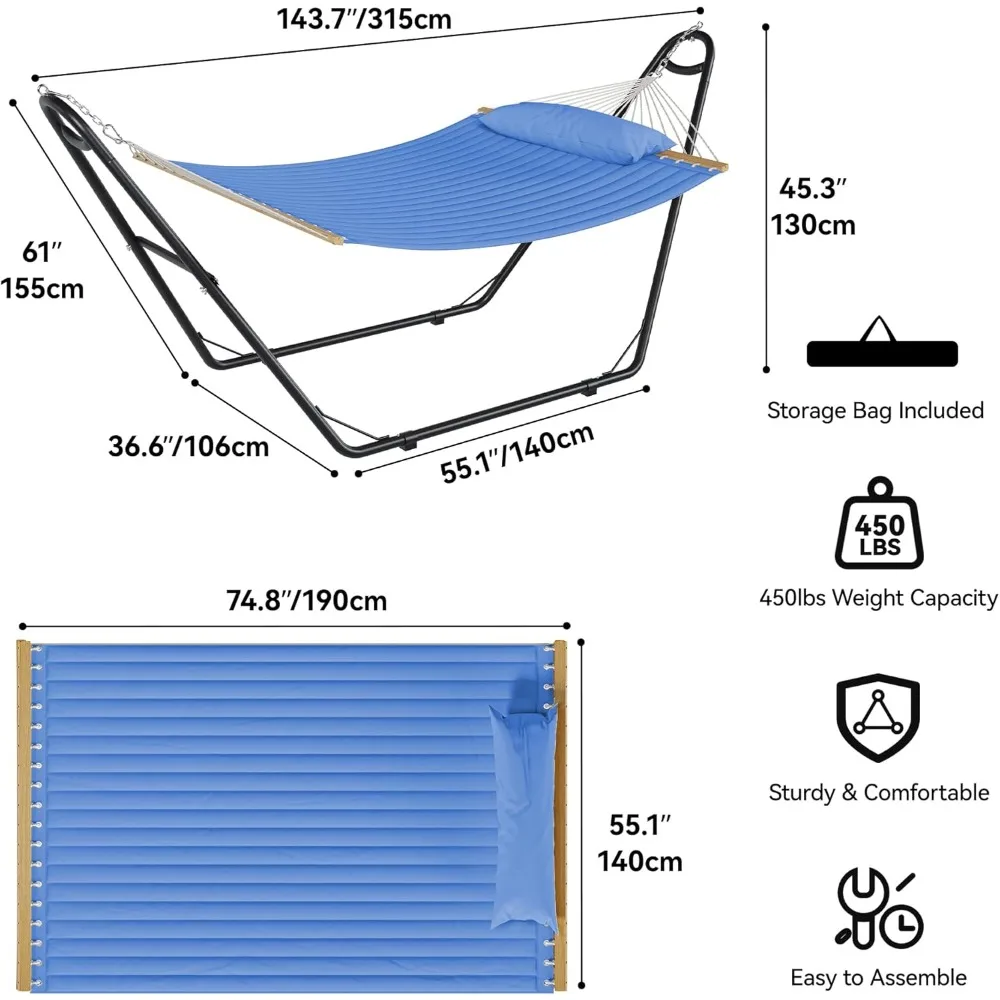
Balance Your Priorities: Use Case Considerations
Different usage patterns demand different durability considerations:
- Weekend backpackers might prioritize moderate weight (12-16 oz/340-454 g) with enhanced durability features
- Thru-hikers covering thousands of miles might accept more frequent replacement of ultralight (8-10 oz/227-283 g) options
- Base campers who move infrequently might select slightly heavier options (16-20 oz/454-567 g) with maximum durability
- Occasional users might find budget options sufficient with proper care
Finding the right balance means honestly assessing how and where you’ll use your hammock most frequently. Complete camping hammock systems often provide the best balance of features for versatile outdoor use.
The Durability Advantage: Premium vs. Budget Hammocks
When comparing hammock options across different price points, certain durability advantages become apparent:
| Feature | Budget Option | Premium Option | Durability Impact |
|---|---|---|---|
| Fabric | 20-30D single ripstop | 40-70D double ripstop | Premium fabric resists tears 2-3x better |
| Stitching | Single or double | Triple with bar tacking | Premium stitching prevents seam failure |
| Suspension | Basic webbing | Reinforced with wear guards | Premium systems last 2-3x longer |
| Weight Capacity | 300-350 lbs | 400-500 lbs | Higher rating provides safety margin |
| Hardware | Basic carabiners | Climbing-rated components | Premium hardware prevents catastrophic failure |
While premium hammocks might cost 2-3 times more initially, they often deliver 3-5 times the useful lifespan. This long-term value proposition makes quality hammocks a sound investment for regular users.
Conclusion: Finding Your Perfect Balance of Weight and Durability
Lightweight hammocks can indeed offer excellent durability when properly selected, used, and maintained. The key is understanding that durability doesn’t come exclusively from thick, heavy materials, but from intelligent design, quality construction, and appropriate care.
By focusing on the critical factors we’ve explored—material selection, construction quality, environmental awareness, maintenance practices, and prevention of common failure points—you can select a hammock that meets your specific needs without unnecessary compromise.
Remember that the lightest option isn’t always the best, nor is the heaviest necessarily the most durable. The perfect hammock for you balances weight and durability according to your specific usage patterns, environment, and personal preferences. With this knowledge in hand, you’re well-equipped to make informed decisions about creating perfect hammock haven for your outdoor adventures.
Whether you’re a weekend warrior or a dedicated thru-hiker, the right lightweight hammock can provide years of comfortable rest under the stars—without weighing you down or letting you down when you need it most.

